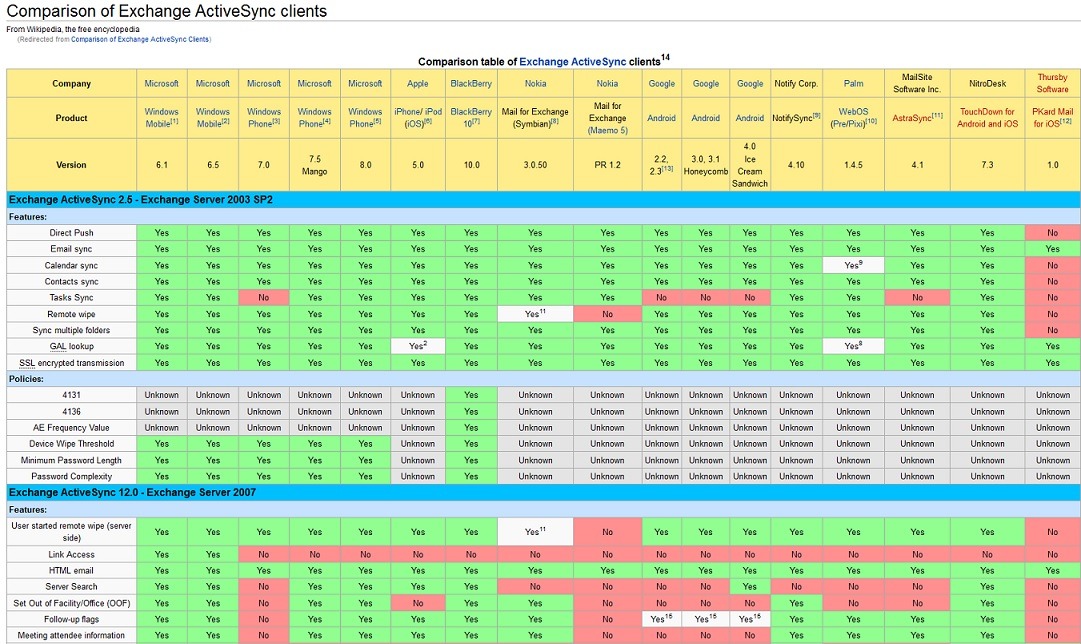Many friends of the networkers were asking me this question, why can’t outlook 2013 fetch mails from Exchange 2003 Server? While my Android/iOS can? As a techie you can understand that there are various reson’s for it, but cannot explain in terms? Allow me to give you a broader perspective why you should not be using Outlook 2013 with Exchange Server 2003.
Android, iPhone’s uses Exchange Active Sync to access your Exchange mailbox. EAS gives you the basic features of email, calendaring, contacts. Outlook uses Extended MAPI and takes full advantage of everything Exchange Server has to offer. While Outlook 2013 also supports EAS accounts, it requires the full-featured version of EAS found in Exchange 2010, not the older and limited EAS found in Exchange 2003.
Exchange 2003 is not supported by Outlook 2013 by default for various reasons, some limitations are:
- Outlook 2013 does not support many legacy public folder functions, such as the Free/Busy service.
- Direct booking of calendar resources is also no longer supported.
- Encryption problems are also there.
- DLP service is absent in Exchange 2003. So, audit requirements will be unattainable.
- Outlook 2013 supports Exchange ActiveSync and while you can use EAS with Hotmail accounts, it won’t work with Exchange 2003’s (or Gmail’s) implementation of EAS. You are limited to POP3 or IMAP with Exchange 2003.
- If you want to try Outlook 2013, you can use it with a Hotmail account, Office 365, POP3, or IMAP account if you don’t have access to Exchange 2007, 2010, or 2013 server.
- Outlook itself without the whole office suite does not provide spell check/grammatical mistakes and more.
- Outlook 2013 does not support connecting to an Exchange server using EAS. This architecture is by design, not a mistake.
- Exchange 2003 also cannot be integrated with Lync 2013.
- Exchange 2003 also cannot be integrated with SharePoint 2013; leaving unable take leverage of the SharePoint 2013 full-fledged features, like Enterprise Search, Contact Cards, Pivot tables.
- Degraded experience and connectivity problems also lie within, and can negatively affect performance of the Exchange Server.
- Social integration is not possible, since every enterprise is adapting to it.
- BYOD management is unmanageable!
- Security features, Role features, are not compatible by design of the latest Exchange Server.
- Outlook 2003 doesn’t support the use of the Autodiscover service.
- And lastly, new apps cannot be integrated into Exchange 2003 firstly for being a 32-bit program.
Another fact is that Exchange 2003 is 10 years old and long out of support, the precedent was set many years ago: Outlook 2010 does not work with Exchange 2000 and Outlook 2007 does not work with Exchange 5.5. Outlook 2016 probably won’t work with Exchange 2007.
Seeing a pattern here? Well, I can say that this is meant to happen. And if I am in a developer team for Exchange, I would drop support for it, as simply it’s risky in a holistic view. 10 years back Microsoft didn’t think of all the compliance that exchange needed to cover, but now all these features are now built into it.
For a holistic view of Exchange ActiveSync Clients @ Wikipedia: http://en.wikipedia.org/wiki/Comparison_of_Exchange_ActiveSync_Clients
